Recording Old City Yazd as a World Heritage Site
Yazd is the first adobe city and the second historic city in the world with its unique historical urban texture which is considered as a world heritage and an unequalled attraction. It was recorded in the list of world heritage sites on July 9th, 2017 due to its intact historical, cultural, and traditional texture.
.jpg)
The discovered historical monuments and buildings in Yazd indicate an antiquity that goes back to the third and fourth century A.H although the history of settlement in this land goes back to 3000 B.C or even before that. The tribes immigrating from Balkh to Persia called the city Yazdan in Pishdadian era and since then they chose this city as a place of worshipping.
.jpg)
With a history that goes back to pre-Islamic era, Yazd has the highest wind towers and minarets in the world, the longest qanat in Iran, the most number of towers of silence, the only circular caravanserai in Iran, and the first safety deposit in the world as well as having the oldest adobe building, mosque, tree, clock tower and square, and a wooden Nakhl (a wooden coffin made of palm tree wood used in the religious rituals) in the world. Also, the historic city of Yazd embraces the vastest historical-residential urban texture in Iran with an area of 700 acres.
.jpg)
The historical structure of Yazd is a harmonious and balanced compound of intertwined old alleys, clay sunshades and buildings which have all the facilities required for a personal and social life and because of which Yazd is famous for in the world. Not only every single historical monument of Yazd (1600 immovable historical monuments and 600 historical buildings) but also the whole old city of Yazd has been registered in Iran National Heritage List with the registration number of 15000 on March 7, 2006.

Some of the features of the old city of Yazd include a very contact and dense urban texture, totally surrounded urban spaces, disordered and covered narrow alleys, connected buildings with no gap, residential spaces adjusted based on direction of the sun and wind, and etc.
In addition to its inner circumstance, the surrounding attractions like the desert with its starry sky, sandy desert areas, moving sands, and the historical sites of the neighboring cities have increased the beauty and value of the old city of Yazd.
.jpg)
The Architecture of Traditional Houses in Yazd
The architectural style of traditional houses in Yazd is usually a beautiful and distinctive example of the architecture of desert houses fit for the warm and dry climates. In every alley in Yazd, there is usually a public hammam (bathroom), an ab anbar (cistern), a mosque, a Hossainiyeh (a religious site), a bazaarcheh (small bazaar), a market, a water canal (to access Qanat's water), small workshops, etc. many of which are still working.
.jpg)
The plan of the houses has many unique elements that usually include a public courtyard (exterior), a private courtyard (interior), a corridor, a sitting platform, a hall, a badgir, a façade, a vestibule, a workroom, a bed room, a breakfast room, a sedari (three-door room), a panjdari (five-door room), a sash room, rooms upstairs, a kitchen, a water tank, pantry, etc.
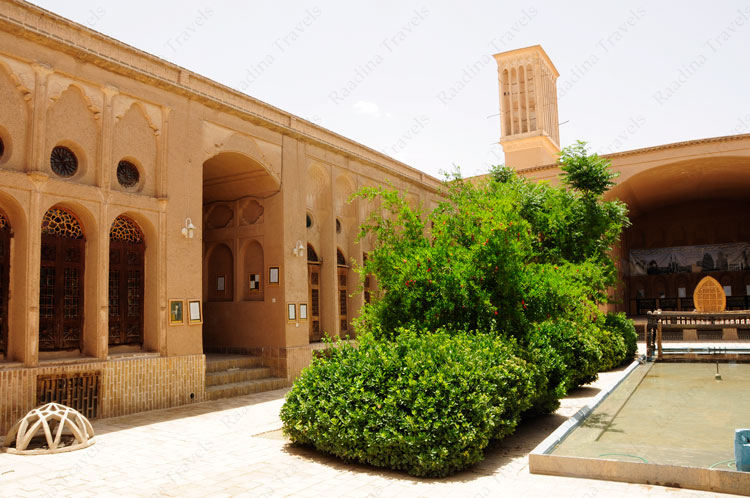
In the architectural style of old city of Yazd, the houses are built toward Kiblah and summer residency spaces (basement, corridor, piscine room, iwan, payab, etc.) and winter residency rooms (sedari and panjdaris, rooms upstairs, Korsi room (traditional heating equipment)) have been designed around the courtyard in an accurate and elegant way.
.jpg)
The summer residency sections of the houses are usually at the east front and the winter spaces are at the west front but sometimes some other spaces like vestibule, kitchen, bathroom, etc. have been located at this part too. Choosing special construction ways, material suitable for this climate, beautiful landscaping, peacefulness, and etc. are other features of the architectural style of old city of Yazd. Not only are reverence and elegance important for Yazdi people, but also they are of the architectural features of the houses in Yazd which can be seen in every single part of them like in long corridors and high walls, vestibules and the way the different spaces around the courtyard are organized.
.jpg)
The Importance of Courtyards in Houses of Yazd
There are several courtyards in the traditional houses of Yazd; while, the main courtyard is the main space in the house. A small water pool and several small gardens around it with some congruous trees like grapevine, fig, pomegranate, and pistachio cause the freshness of the air and lushness in the courtyard. A courtyard is a very useful space in which some activities like sleeping in the open space, house gatherings, children's games, wedding ceremonies, and religious festivals take place.
The orangery courtyard is a small one which provides the chance of growing plants as well as giving enough light to the space. These courtyards had been mostly built in 9-part-square shapes in each of which angles a sedari space or an bricked hashti would be made. The courtyard on which the family's women and children used to live was called the interior courtyard that had a pool and a variety of beautiful gardens. In the historical houses of Yazd like those belonged to the merchants and high rank clergymen, a special courtyard known as the exterior courtyard would be reserved for the guests along with a guest room that was a symbol of respect and honor for them.

The historical monuments of Yazd
Yazd is the capital of Persian architecture and the clay is the main and most important known material in their construction. Clay has been involved in Iranian construction style since beginning, due to some insulating features and high strength, not letting heat and coldness pass through, not allowing rain drops to leak in the dome liked structures and arched roofs covered with a plaster of clay and straw, being cheap, easily daubing, and etc. this material has found its way through all the buildings in the old city of Yazd. Its warm color has given soul and life to the city.

Badgir ( wind tower )
Badgirs, domes, and minarets are the most typical apparent indicators of the architecture of Yazd. As well as giving beauty and grandeur to the buildings, the badgirs would ventilate the interior spaces of the buildings in the best way, cool down the cellars and ab anbars and they even had been used to keep the foods cool. In this architectural style, badgirs functioned in such a way that they would be built in the wind's path and because of having a drop and special condition of the badgir's grids, they would take in the wind with high pressure and give the warm and polluted air out from the other path.
.jpg)
The History of Wind Towers
The warm and hot climate of the desert areas made the innovative and active people of Yazd to devise a cooling structure called wind tower which receives the world's attraction. After Yazd's desert cities and Kerman and the fact that the wind towers proved to be quite effective, other warm cities in Iran such as Bandar Abbas, Qeshm, Sirjan, and Chabahar used them as well in order to cool down their buildings and houses. There are still some signs of them available.
.jpg)
Why is Yazd nick named as city of badgirs ?
The historical city of Yazd has the most number of wind towers in way that every house had one in the past; this is why it was called the city of wind towers. As the wind towers change the hot air to cool and pleasant air, they are specifically used in the desert cities specially Yazd.
The badger in Dolat Abad Garden which is 33.8 m high is the highest and most famous wind tower in the world and shows the genius of Yazdi architectures. The beautiful octagonal architecture of this 280- year- old wind tower which was built of clay and bricks by the order of Mohammad Taqi Khan Bafqi who was one of the great khans of Yazd in Zand and Qajar dynasties.
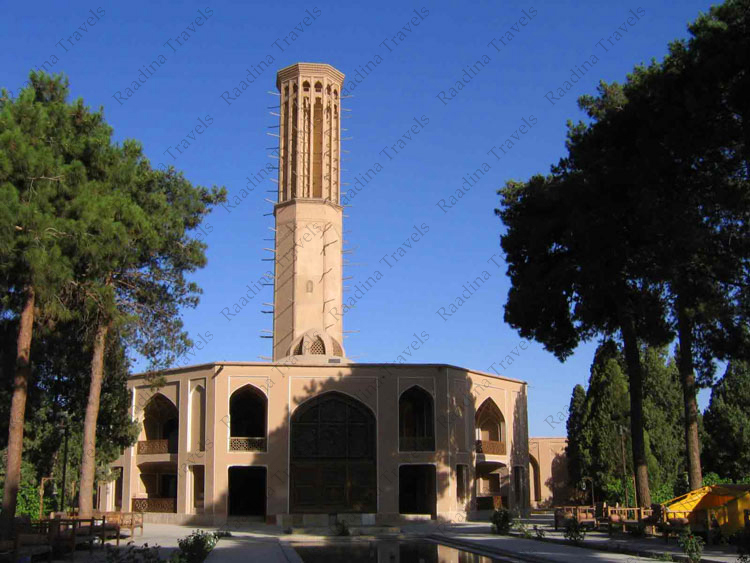
Ab Anbar and Its History
Ab anbars are the oldest architectural phenomena for water reserving in the desert areas of the world invented by Iranians. Ab anbars were used to reserve and cool down the water. Ab anbars were used for various purposes especially in the warm areas of Iran such as Persian Gulf's coastal regions and even in the northern cities like Sari and Gorgan.
Dated back to 2150 B.C, the ab anbar of Ur city near Basra is the oldest cistern in the world and the cistern of Chogha Zanbil in Khuzestan which dates back to the second millennium B.C and was built contemporary to the prosperity of Ilam civilization can be considered as the first cistern in Iran.
.jpg)
The Architecture of ab anbars
An ab anbar is a covered pool made by clay and bricks related to Qanats which is built in the desert and arid areas. These pools get filled with rain water and seasonal streams and are usually made in the basements.
In general, there are two types of ab anbars: public ab anbars (in the neighborhoods, caravansaries, villages, etc.) and private ones (inside houses) which their main materials include stone, brick, plaster of lime and ashes and sand, mortar, dimeh (a compound of ashes and dune sand, and etc.) are among the main construction materials and these materials not only caused the strength of the building, but also prevented the water from spoiling.
Basically, the structure of ab anbars is made of 6 main elements including a dome, a badger, a facade, a stairway, a tank or pashir (the place where a big brass faucet is connected to the tank and people can get water from). The number of badgirs in each ab anbar is in flux based on its function and the climate condition. Sesh Badgiri Ab anbar of Yazd has 6 badgirs and Asr Abad Ab anbar has 7 badgirs. Based on the shape and the way they have been built regarding the climate and region differences, ab anbars are different which include cross shaped ab anbars, stretched shaped ab anbars, deep arched shaped ab anbars, and the carved ones in the mountains.
.jpg)
Payabs
The payab is a vestibule covered with a four or eight-sided Turkish room which is built on the Qanat's passage and could be accessed going some stairs down from the ground. There is a pool at the center and surface of the payab in which the water would circulate, cool the payab down and then go out. The payab had been used personally and publically as a refrigerator for keeping foods or as a room for taking a nap.
Excellent and prominent samples of the payabs can be seen in Masjed Jame of Yazd, Naeen Jame Mosque, Natanz Jame Mosque, and in the traditional houses of Yazd like Yazd Kohan Hotel.
.jpg)
Ashti Konoon Alleys
Ashti Konoon Alleys (literally meaning make up alleys) in Yazd are intertwined alleys which are located in the old city of Yazd with their beautiful high mud walls that look like a big network. These alleys host traditional houses that have big wooden doors and amazing knockers. These alleys are so narrow that two persons can barely walk through them at the same time. If two sulking persons happen to pass two directions at the same time in one of these alleys, they have to swerve their bodies to pass otherwise they will stick there. In this funny situation, they begin to smile and it may result to make up which is called ashti in Persian.
.jpg)
Sabat
Sabat literally means a sunshade and metaphorically is attributed to the covered alleys and passageways in the warm desert cities which keep the people from the hot rays of the desert sun and cools them under its shade. This creative idea also originated from the desert's people and shows the art of Yazdi architects. The sunshades are divided into two models in terms of view of being roofed: one model has flat roof on the wooden and straw mats and the other one is arched roof with Roman brickworks that its weight is distributed among the pillars, walls, and the ground.
.jpg)
Sabats, the half-covered clay structures, balance the flow of air inside the alleys in a way that in summers they make the air inside the sabat cooler than outside and, on the contrary, in the winters they make the air inside the sabat warmer than outside. Sabats also cause the integrity and stability of the houses around them and decrease the pressure against them taken from neighboring constructions. The roofs of the houses under the sabats are usually used by neighboring units being connected with each other and sometimes seem to be like a room overlooking the alley.
Some dead-end alleys have entrance doors which are for more safety for their residents and are called Draband. In every darband, do live some families and basically their intimacy and neighborhood is very important for them.
The longest sabat belongs to the tourist village of Furg in Darmian Country located in south Khorasan Province. This sabat along with Furg Castle and historical structure of the village are some of the touristic attractions of the province.
.jpg)
Pavilion
Originally pavilion or Kolah farangi in Persian is a royal mansion which is at center of palaces and gardens used for having meals or taking rest and decorated in different styles. But in Yazd, there is a special kind of kolah farangi which is installed right at the center of the roof and guides the wind inside the house from 6 directions. These pavilions are completely different from the badgirs.
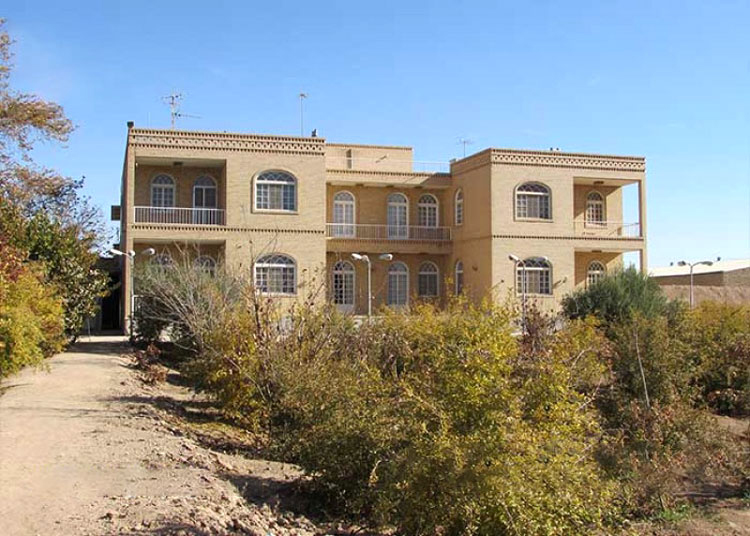
Places and districts of Old City of Yazd
The smart people of Yazd were the first ones to make the clay using four main elements namely soil, water, fire, and wind. With their great efforts and hardworking, they extracted water from the tough and hard soil of the desert and invented Qanat for building clay palaces and houses and a historical city with a glorious architecture which catches eyes of every viewer.
.jpg)
The historical city of Yazd is a treasure box of Iranian art, culture, and civilization which are reflected in the religious buildings, mosques, Hossainiyes, mausoleums, Zoroastrian sites, the historical houses and gardens, badgirs, and traditional bazaars of Yazd.
The typical sample of the old and genuine architecture of Yazd is shown in Fahadan district or Youzdaran which in the local dialect is called Jangal district.
.jpg)
The other important historical districts of Yazd are as follow: Ghale kohne district, Sar-e Jam district, Sar-e Dorah district, Yaghoubi district, Mosallah district, Lab-e-Khandaq district.
To book a tour to this amazing old city, please contact Raadina Support.
Online Support










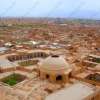

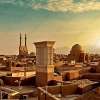
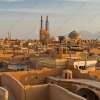
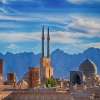
.jpg)
.jpg)
.jpg)

.jpg)
.jpg)

.jpg)
.jpg)


.jpg)
.jpg)

.jpg)
.jpg)
.jpg)
.jpg)
.jpg)
.jpg)

.jpg)
.jpg)
